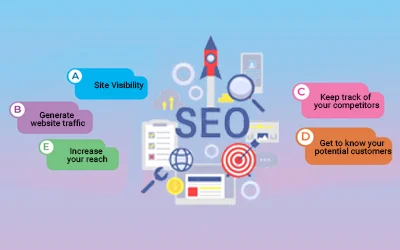Payment gateway integration is key for businesses to manage online transactions and succeed in the growing market. Integrating a payment gateway into the website is essential for secure online payments that enhance user experience and generate leads.
Modern customers expect a quick and easy checkout process, so businesses must implement payment gateway API into their applications. This approach helps create a smooth and secure checkout that builds customer trust and loyalty.
In this blog, we will explore how an ecommerce payment integration functions and how to integrate one into your website.
Understanding Payment Gateway!
A payment gateway on your website allows customers to use credit cards, UPI, and bank transfers. It functions like a digital card reader and is used by many popular ecommerce platforms. Integrating a payment gateway API helps securely check, approve, or reject transactions for the business over the internet.
How Does a Payment Gateway Operate?
Following is the process of how a payment gateway works:
- 1. Customer Purchase: The customer enters payment details on your checkout page.
- 2. Secure Data Transfer: The payment information is encrypted and sent to the payment gateway securely.
- 3. Forwarding: The payment gateway forwards this data to the payment processor.
- 4. Approval Request: The payment processor sends the details to the customer's bank for authorization.
- 5. Approval or Denial: The bank approves or denies the transaction based on available fund and security checks.
- 6. Response: The approval or denial is sent back through payment processor to the payment gateway.
- 7. Transaction Completion: If approved, the customer receives confirmation. If denied, the transaction is stopped, and the customer is notified.
- 8. Funds Settlement: The payment gateway sends approved transactions to your bank for settlement. The bank deposits the funds into your business account.
Despite many steps, this process is automated and happens in seconds. A payment gateway API's main role is to transmit data, making it crucial for secure online transactions.
Integrating a Payment Gateway into Website: A Complete Guide
Adding a payment gateway for websites involves a few simple steps. The exact process may very depending on the payment gateway and your website platform, but here's a general step-by-step guide:
1. Select a Payment Gateway
In the initial step, look for a payment gateway solutions provider that meets your business needs. To select the most suitable provider, consider a few things to check in your ecommerce payment integration provider. These are transaction fees, payment options, security measures, and compatibility with your e-commerce platform.
2. Sign Up for an Account
CNext, you need to set up a merchant account based on your chosen payment gateway. Some providers, like Invoidea, can help you combine your merchant account with a right payment gateway for easy setup.
3. Get the API Keys
After setting up your account, you need to get your API keys. These keys seamlessly connect payment gateway for websites and ensure secure communication between business and gateway’s server.
4. Integrate Payment Gateway for Websites
Making a smooth eCommerce payment integration with your website depends on your specific requirements. Some platforms like Shopify or WooCommerce have custom plugins that make your integration easy. For others, you might need to manually add code. Invoidea offers payment gateway ecommerce services with user-friendly APIs for developers.
5. Testing for Payment Gateway
Before going live, test the gateway using a sandbox and try to make a payment to see whether it is proceeding correctly or not. Once you are sure everything works properly, move on to the next step.
6. Go Live
After testing your payment gateway integration, you can go live, and your customers will start making purchases on your site.
It is very important to ensure the security of your customer data throughout the process of ecommerce payment integration. That’s why it becomes vital for businesses to choose the right, reputed, and trusted provider for their payment gateway solutions.
Why Choose Us for Your Gateway Solutions
We understand that every business wants to integrate a secure and fast payment gateway API into its website to enhance user experience and drive growth. However, choosing the right gateway and provider can be challenging.
Feeling stuck? Don’t worry! Whether you're wondering “How to make ecommerce website?” or need a cost-effective payment gateway integration solution, Invoidea is here to help.
Invoidea is a leading ecommerce development company in Delhi that offers API integration services for businesses of all sizes. We consult with our clients to understand their needs, analyze their business to identify areas for improvement and suggest the best options at affordable prices.
Our experts integrate customized payment gateways into your website, ensuring a smooth, easy, and fast operating experience.
Conclusion
Integrating a payment gateway into a website helps businesses enhance their customer buying experience. However, before adding a gateway to your website, it is important to identify your business needs and select the most suitable payment gateway solutions provider.
This blog highlights the concept of payment gateway integration, its functions, and how to install one on your website. Still, if you have any concerns or need assistance, Invoidea is here to help. You can consult with our expert for personalized suggestions.










